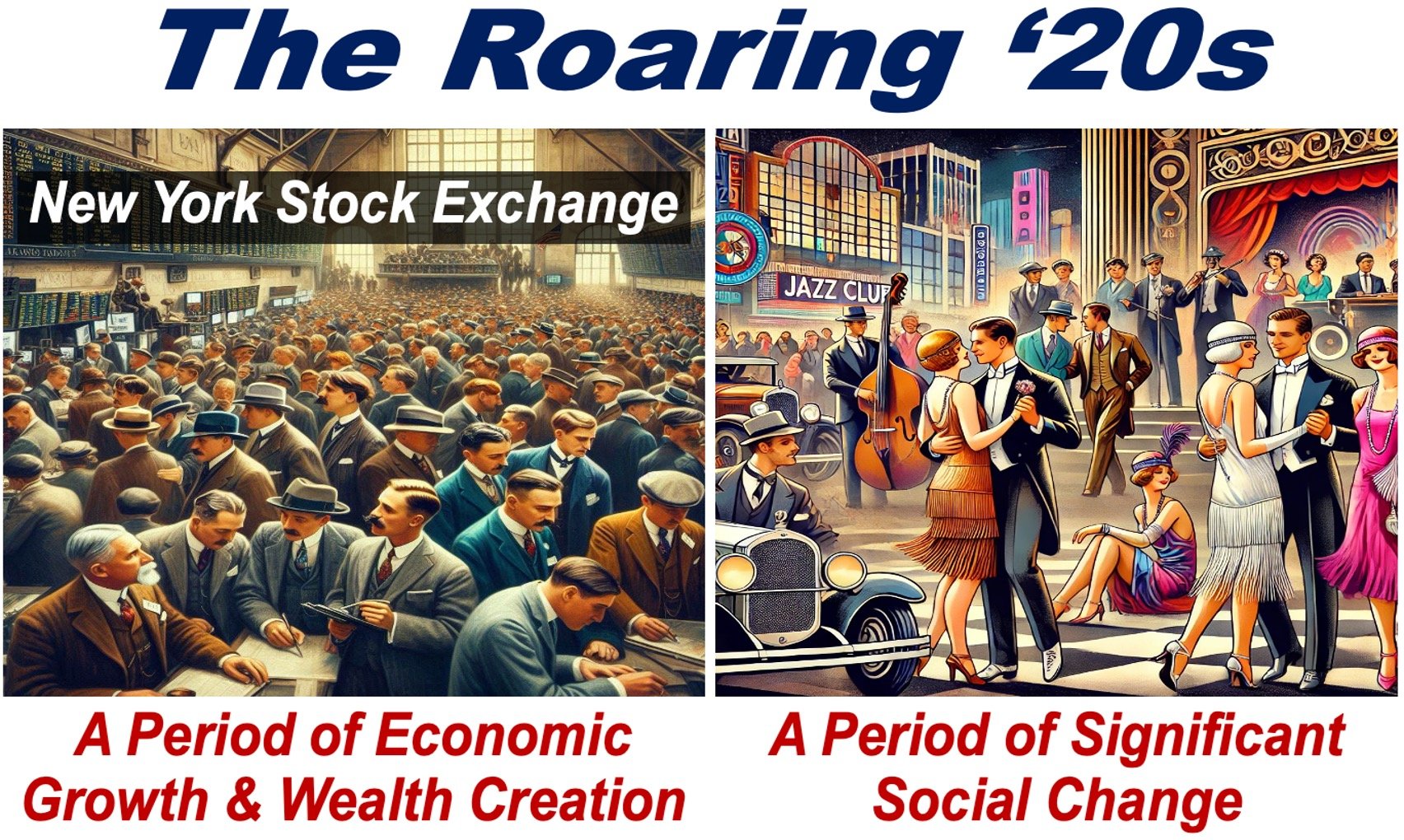Optimistic Economic Indicators Emerge
The U.S. economy is showing signs of a potential modern-day version of the “Roaring ’20s,” according to recent analysis from UBS strategists.
They highlight that the economic landscape today mirrors several factors present during the economic boom of the 1990s.
UBS’s outlook, which may have once seemed overly optimistic, is now gaining traction as recent data revisions show stronger-than-expected growth in consumer demand and gross domestic income (GDI).
Revised data for 2023 showed a 1.3 percentage point increase in real GDI growth, further boosting confidence in sustained economic expansion.
UBS now suggests the U.S. is already meeting several key benchmarks for a Roaring ’20s scenario, with strategists expecting a further surge in economic productivity.

Key Criteria for a Roaring ’20s Economy
UBS defines a Roaring ’20s scenario as one characterized by sustained gross domestic product (GDP) growth of at least 2.5%, inflation held between 2-3%, and a federal funds rate close to 3.5%.
These factors, combined with a 10-year Treasury yield around 4%, are seen as the foundation for sustained economic prosperity.
Current indicators suggest that the U.S. economy is already trending toward these targets.
Real GDP grew at an annual rate of 3% in the second quarter of 2024, while inflation dropped to 2.5% as of August 2024.
Although the federal funds rate remains slightly higher than desired at 4.75% to 5%, UBS strategists expect further adjustments by the Federal Reserve to bring it closer to their ideal level.
Fortune Magazine quotes Jason Draho, head of asset allocation Americas at UBS, who said:
“It’s no longer too soon nor too optimistic to suggest that the US will experience a Roaring ‘20s economy. It already is by our criteria, with the relevant question being whether these conditions will continue, not whether they will materialize.
“The odds continue to rise for this bull-case scenario, with many recent developments on the demand side, supply side, and monetary policy all supportive.”
The Role of Monetary Policy and AI Investment
Monetary policy plays a pivotal role in enabling the potential Roaring ’20s economy.
UBS notes that recent rate cuts by the Federal Reserve, including a bold 50 basis point reduction, signal a commitment to fostering growth while maintaining full employment.
This approach is essential to maintaining the delicate balance between controlling inflation and supporting economic expansion.
Additionally, advances in artificial intelligence (AI) and capital expenditure (capex) investment are expected to boost productivity significantly.
UBS points out that AI-driven investments, combined with falling interest rates, could fuel an economic boom similar to the postwar growth seen in the original Roaring ’20s and the late 1990s.
Challenges and Uncertainties on the Horizon
Despite the promising outlook, UBS cautions that several challenges could disrupt this optimistic scenario.
One of the most significant concerns is the potential cooling of the labor market. While employment levels remain robust, the labor market has shown signs of loosening compared to pre-pandemic levels, which could hinder growth prospects.
Rising unemployment remains a key factor to watch, particularly with the Sahm Rule—a reliable indicator of impending recessions—having been triggered in July 2024.
Additionally, geopolitical uncertainties, such as the upcoming U.S. elections and escalating global tensions, add further risks to the economy’s future.
Nevertheless, UBS remains cautiously optimistic, stating that the U.S. is on the path to a Roaring ’20s economy, provided that the current favorable conditions can be sustained. With strong demand and supply-side improvements underway, there is increasing confidence that the U.S. economy could experience a long-lasting period of prosperity.
The Roaring ’20s – A Brief Description
The Roaring ’20s, or Jazz Age, was a period of dramatic transformation in both economy and society, primarily in the U.S. and parts of Europe. The era witnessed rapid industrial growth, driven by mass production in sectors like automobiles and consumer goods, leading to widespread prosperity.
Technological innovations, such as the radio and cinema, reshaped entertainment, while urbanization saw more people moving to cities. Women gained more independence, exemplified by the rise of the “flapper” culture, and jazz music became a defining cultural force.
Economically, the roaring ’20s were characterized by:
-
Rapid Economic Growth
The U.S. experienced an average GDP growth of around 4.2% annually.
-
Mass Production
Assembly lines boosted production in industries like automobiles, leading to higher consumer goods availability.
-
Stock Market Boom
The stock market surged, with the Dow Jones rising nearly 500% from 1921 to 1929.
-
Rising Wages and Employment
Wages increased, and unemployment averaged around 3.3%.
-
Urbanization
More people moved to cities, driving demand for housing and services.
-
Credit Expansion
Easy credit fueled consumer spending, especially on cars and household goods.
-
Wealth Inequality
Income disparity grew, with the top 1% controlling nearly 40% of wealth.
-
Agricultural Decline
Farmers faced economic hardships due to overproduction and falling prices.
-
Low Inflation
Inflation remained stable, with only slight price increases.
-
Speculative Bubble
Speculation in the stock market and real estate contributed to the 1929 crash.
This remarkable period of prosperity and social change, however, came to an abrupt end with the onset of the Great Depression in 1929.
Final Thoughts
The coming years will determine whether the U.S. can fully realize this Roaring ’20s scenario. Investors, policymakers, and businesses will need to navigate potential challenges carefully, but the overall trend suggests that the U.S. economy is moving in a promising direction.
